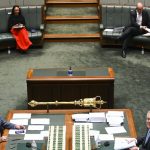Above all, a plan for housing is needed

The solution to address both housing affordability and affordable housing lies in a combination of measures. Professor of Housing Research and Policy at the City Futures Research Centre Hal Pawson explains.
Housing in Sydney is not, in fact, unaffordable to all. Most of those in the baby boomer generation who bought their first home prior to 2000 will be in a very strong financial position and their housing costs are either very low (if they are still paying a mortgage relating to a pre-2000 house price) or nil (if they have paid off their housing loan entirely). Buying a home in Sydney is also not unaffordable to that minority of younger people with access to ‘the bank of mum and dad’.
Sydney house prices do present a big problem for younger people on middle and lower incomes who do not have access to significant family wealth. A particular problem is the ‘deposit barrier’ to accessing a mortgage. This has risen substantially over the past 10-20 years. Nationally, in 2000 a typical deposit for a house equated to 100% of average annual incomes. By 2014 that had risen to 170%. Therefore, saving 10% of gross salary, it would have taken a decade to save for a deposit back then. But now, 17 years.
What can be done about the rise of prices to these eye-watering levels?
The only ‘silver bullet’ here would be the significant property market downturn likely to be prompted by a serious economic shock such as a sharp rise in interest rates. And that’s a solution no-one wants to see. Outside of that scenario, I would concur with most other informed commentators that the answer lies in a combination of measures. On the supply side, yes, efforts should be made to ensure that ‘planning system inefficiency’ does not unreasonably impede housing development. But alongside such measures it’s also imperative that governments take action to damp down speculative housing demand that is inflamed by the indiscriminate effective subsidies provided to landlord investors through negative gearing and capital gains tax concessions – especially as these currently apply to existing – as well as newly built – properties. Similarly, to discourage over-investment in owner-occupied housing – another factor that inflates property values – the Federal Government should reform the concessional treatment of ‘the family home’ in the pension assets test.
Part of the problem also results from the inefficient way we use our housing.
More and more of our dwelling stock is second homes or under-occupied homes. For example, as shown by ABS survey data, nearly 1 million owner occupiers across Australia have 3 or more bedrooms than they need. To tackle this issue we need to recognise the ways that our current tax settings make the problem worse by (a) imposing high rates of stamp duty on housing transactions, discouraging people from ‘downsizing’, and (b) imposing no penalty on owner occupiers or landowners failing to make efficient use of housing and land. A broad-based land tax to replace stamp duty is what we need to address this issue, as well as to encourage the speedy ‘building out’ of sites with residential development approvals, many of which are held vacant for long periods by speculative land-holders. It would also obviate the need for a difficult-to-operate ‘vacant property tax’ of the kind that has recently become a popular idea.
Above all, government needs a plan for housing. And that plan needs to address both housing affordability (reducing the hurdles for first home buyers) and affordable housing (rental homes within the means of lower income earners).
Housing Affordability Online Consultation:
Q: What can be done to improve housing affordability?
Hal Pawson joined UNSW in 2011 as a Professor of Housing Research and Policy at the City Futures Research Centre. His research interests include the governance and management of social housing, private rental markets and urban renewal.














